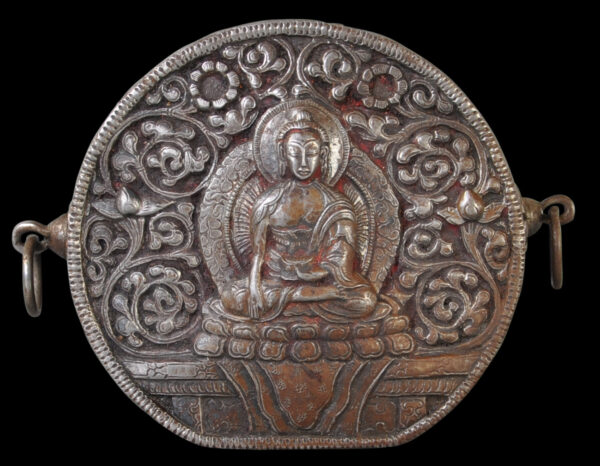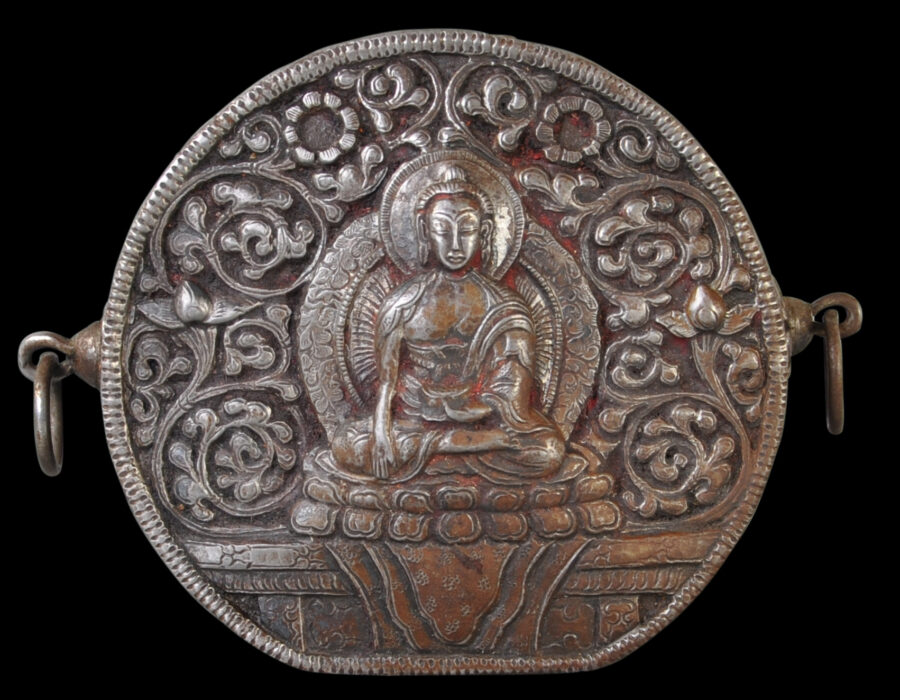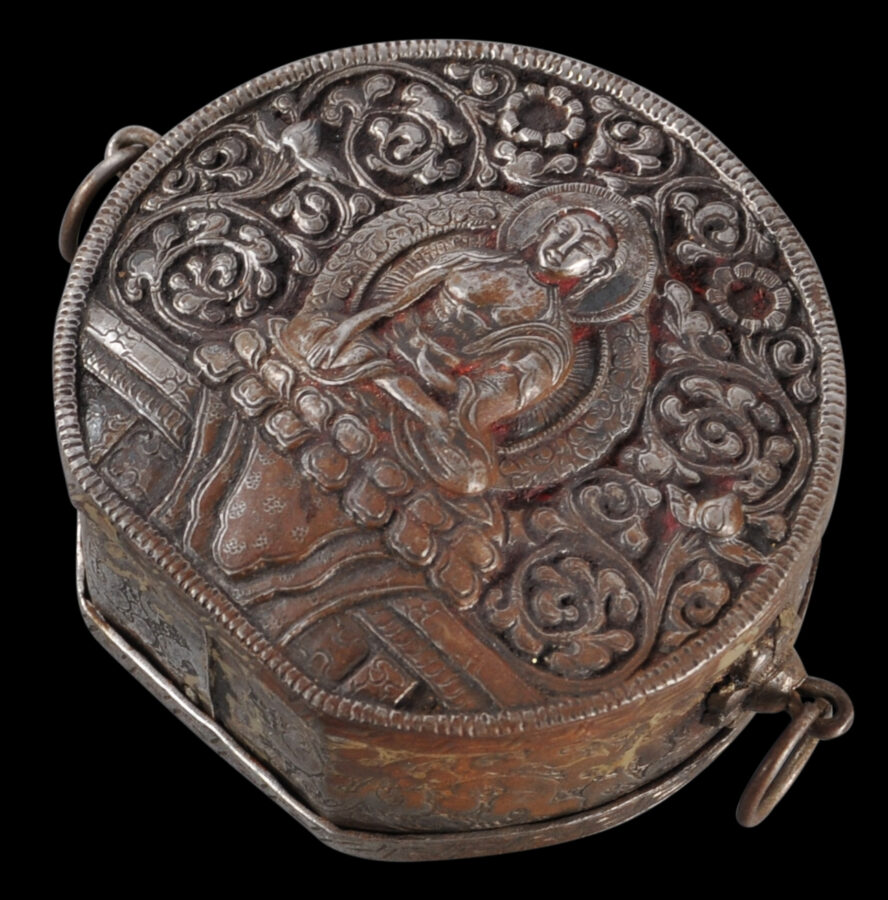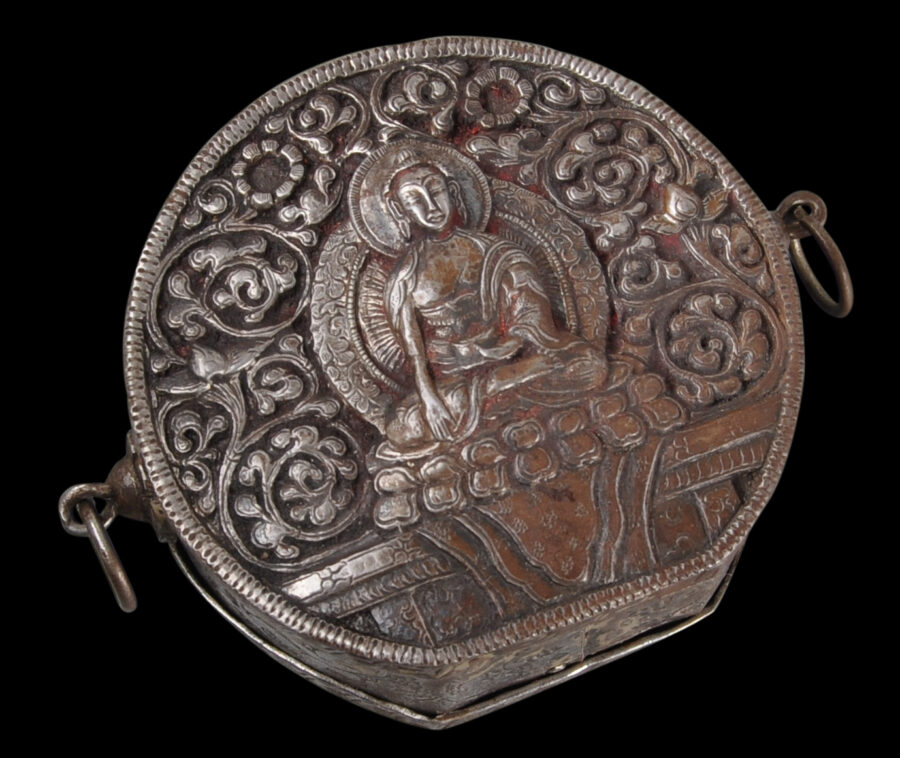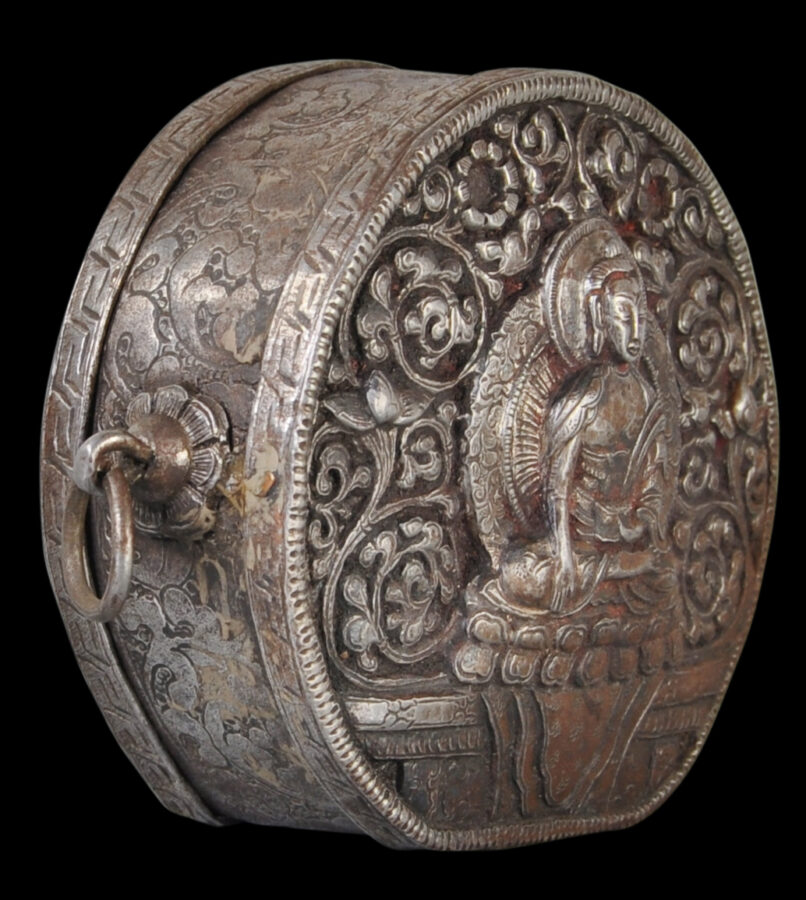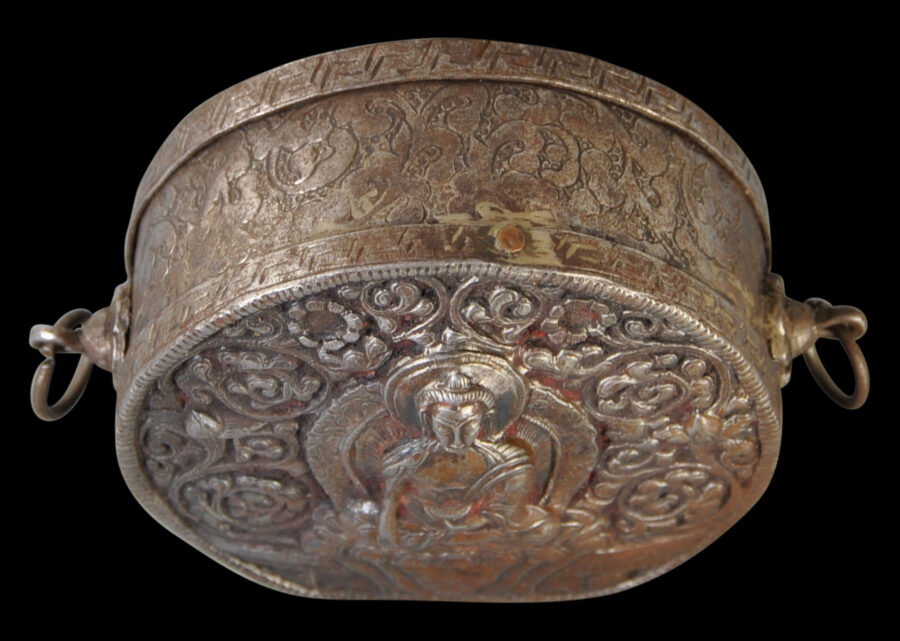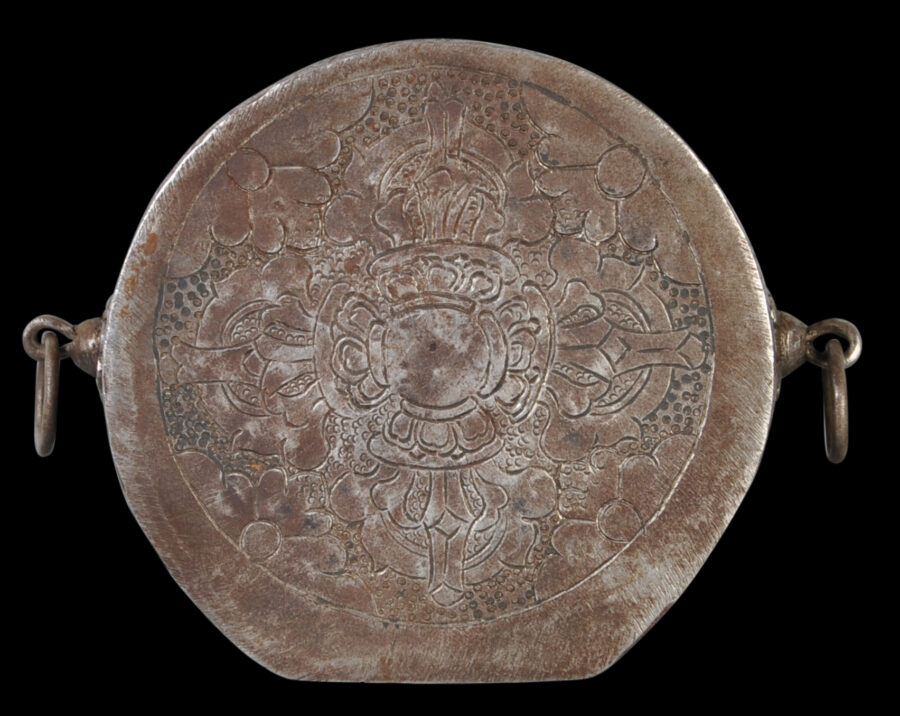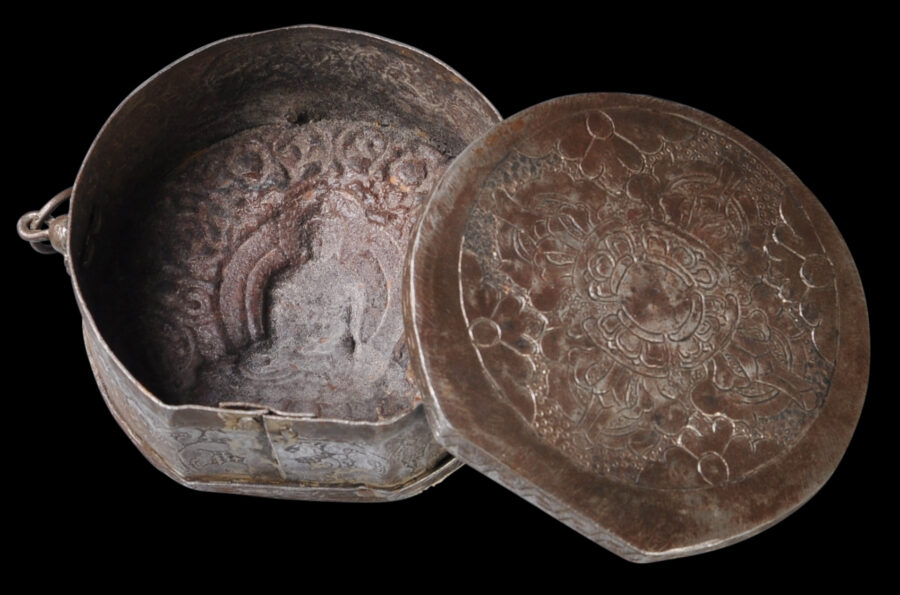This Tibetan amulet or ga’u box is made of iron. It is of rounded form with a flattened base. The front is repoussed and chased in high relief with the Buddha seated in dhyansana on a lotus throne that is on a platform piled with several layers of textiles all delicately decorated with floral motifs. The Buddha is holding a wide dish in his left hand as as such can be considered a medicine or healing Buddha.
The Buddha has a halo around his head and a broader halo that emanates from his body.
The vest of the front is filled with Himalayan lotus scrolling.
The sides of the box are engraved with leafy scrollwork against a tooled background.
A ring on each side emanating from floral plaques allowed the box to be attached to a belt so that it might be worn across the chest.
The reverse is engraved with a double dorje motif within a roundel further infilled with flower motifs.
The earlier age of this ga’u is suggested by the material from which it is made – iron – and by other stylistic considerations such as the Buddha’s long, narrow face which is indicative of earlier depictions.
Ga’us are encountered only in Tibet or areas influenced by Tibetan Buddhism, such as Bhutan. No other Buddhist regions have anything like them. They were worn when travel was undertaken but otherwise were stored on the domestic altar.
This example is particularly rare and early. It is also in splendid condition. Every part of the box is iron (each part attracts a magnet).
Iron ga’us are relatively rare. An example is illustrated in Ghose (2016, p. 46). Another is illustrated in Clarke (2004, p. 24). Both these examples are attributed to the 15th century.
References
Clarke, J., Jewellery of Tibet and the Himalayas, V&A Publications, 2004.
Ghose, M. (ed.), Vanishing Beauty: Asian Jewelry and Ritual Objects from the Barbara and David Kipper Collection, Art Institute of Chicago, 2016.
Pal, P., Art of the Himalayas: Treasures from Nepal and Tibet, Hudson Hills Press, 1991.
Proser, A., (ed.), Pilgrimage and Buddhist Art, Asia Society Museum/Yale University Press, 2010.


